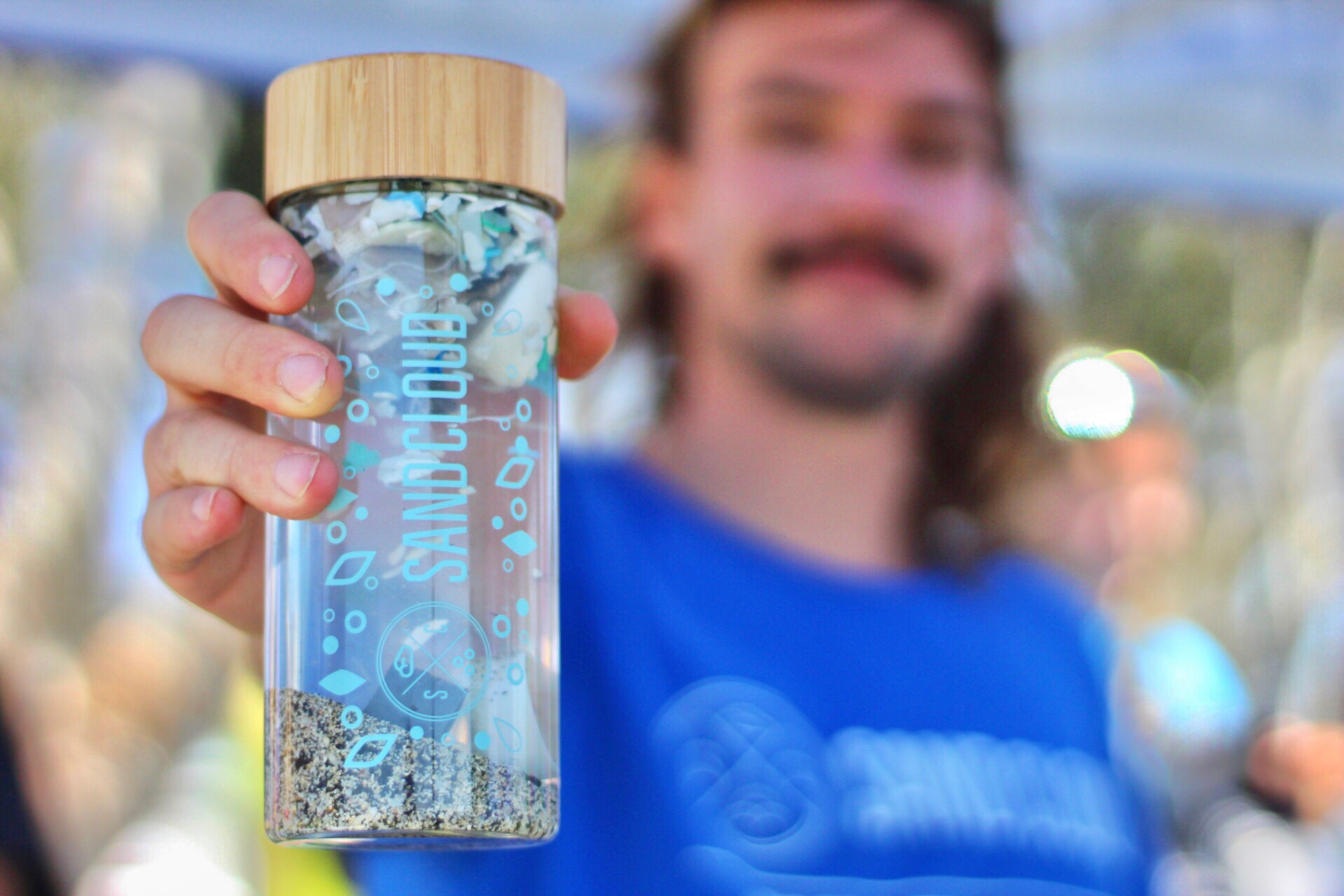By Brandon Leibel, co-founder of Sand Cloud
Cause marketing, when done correctly, is more than just a buzzword. It’s the act of committing your marketing efforts to produce something greater than product sales and ad impressions. At Sand Cloud, our mission-based marketing strategy has been the driving factor for making business decisions that contribute to a greater good. We donate a portion of all sales to charities that protect marine life and ocean environments. But beyond that, we give our philanthropic partners like the Surfrider Foundation and Marine Conservation Institute a platform to spread their message, we participate in their events and on-site cleanups, and we promote a bottom line philosophy: #SaveTheFishies.  –>
–>
That’s not to a say a brand can’t make it in business without a mission. Many successful companies are built on innovation, capitalism and flashy marketing. They might have a charitable aspect and corporate social responsibility built in somewhere in their brand, but it’s not front and center. However, at the end of the day, when you give your customers a mission to actively be a part of, it elevates them from simple consumers to total brand advocates: loyal, vocal, diverse customers who promote not only your products, but your cause, too. And brand advocates are powerful.
Brand advocates are powerful because your customer wants to buy into the “why” — not just the “what” — of what you are selling. This is especially true with the millennial generation. In fact, 81% of them expect their favorite brand to make public statements on their corporate citizenship. Gen Z consumers – who account for $860 billion in direct spend a year – are shaping up similarly, and are shown to favor authentic, mission-driven brands. With these target audiences in mind, you can see why it is important to make a deeper connection with your marketing efforts.
Incorporate a cause
If your company has yet to consider mission-based marketing, it’s not too late to incorporate a cause into your brand’s DNA. Pick something that will align with your personal beliefs (or your team’s beliefs) and that will resonate with your core customer. Educate your entire internal staff about the mission and what the brand is doing to further it. Making the world a better place is always a great concept, but all staff should have a concrete idea of the brand’s contribution in achieving this.
 –>From there, it’s less about traditional marketing and more about spreading the mission. Showcase it on all platforms – at Sand Cloud, for example, we give our charity partners access to take over our social media accounts to share stories, Facebook lives, Snapchats and more.
–>From there, it’s less about traditional marketing and more about spreading the mission. Showcase it on all platforms – at Sand Cloud, for example, we give our charity partners access to take over our social media accounts to share stories, Facebook lives, Snapchats and more.
 –>
–>
The key to effective cause marketing is making the message focused on an action, not a product. Instead of “buy, buy, buy,” encourage your customers to do, act, think, feel. The old mantra “show, don’t tell” also applies here. Missions are meant to address a problem, and giving your followers a transparent, behind-the-scenes look at what the problem is and what your brand is contributing to fix it will make a lasting impression.  –>
–>
One thing I’m really proud of with our mission at Sand Cloud is that we’ve incorporated our goal to save the fishies into our business since the beginning. Since our first product was a beach towel, it was a really natural fit. As our marketing lead, I was given the chance to build a cause-based program and a community of customers who are dedicated to helping us protect the world’s beaches.
Brandon Leibel is the co-founder of Sand Cloud, a company he started with co-founders Bruno Aschidamini and Steven Ford in 2014. Sand Cloud’s mission is to #savethefishes. As a social conscious brand that gives back to marine life, Sand Cloud’s products and mission allow the company to achieve its goals of protecting our marine life and ocean ecosystems. With what started with the success of their lightweight, sand-resistant, multi-functional Turkish beach towels, Sand Cloud has grown their product line to include bathing suits, apparel, and accessories. As the company grows, so does its positive impact on our oceans, beaches, and marine life.








